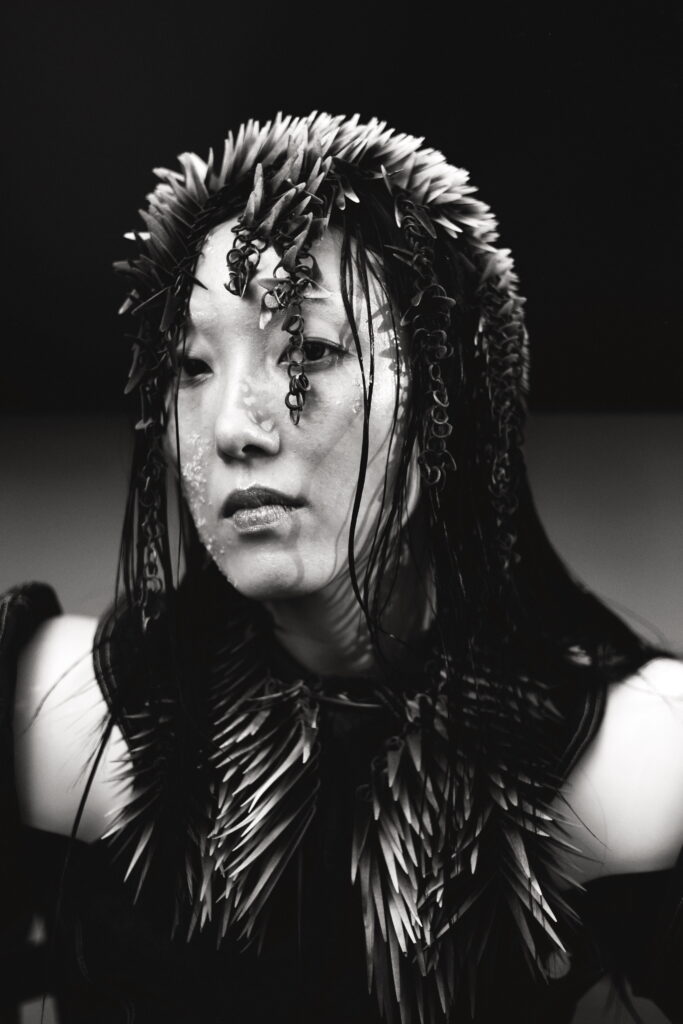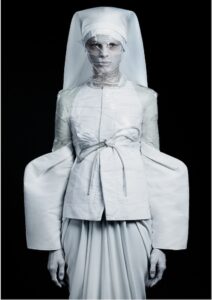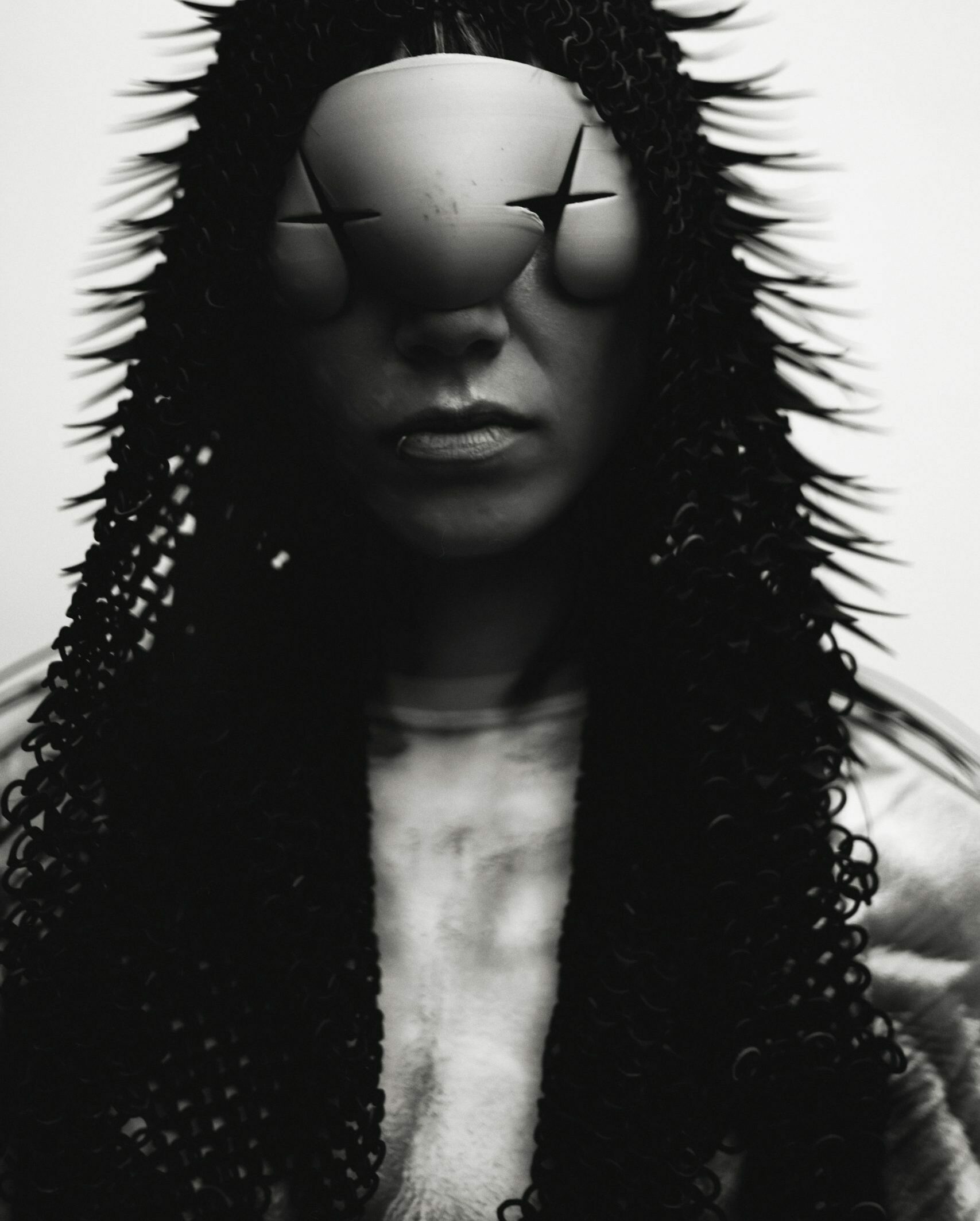
INTERVIEW : Victor Clavelly’s Surreal Fashion Lore
Blending video game design, CGI, and couture craftsmanship, Victor Clavelly transforms technology into poetry. His creations stretch the limits of the body, reimagining what fashion – and reality – can become.
At just 26, Paris-based designer Victor Clavelly has already landed some of the fashion industry’s most high-profile collaborations. Fusing video game design, cutting-edge technology, and a self-imagined universe rendered in 3D, Clavelly brings to life otherworldly garments through hyper-technical, unconventional construction techniques, creating mystical fashion pieces that transport viewers into an entirely new realm of aesthetic experience.
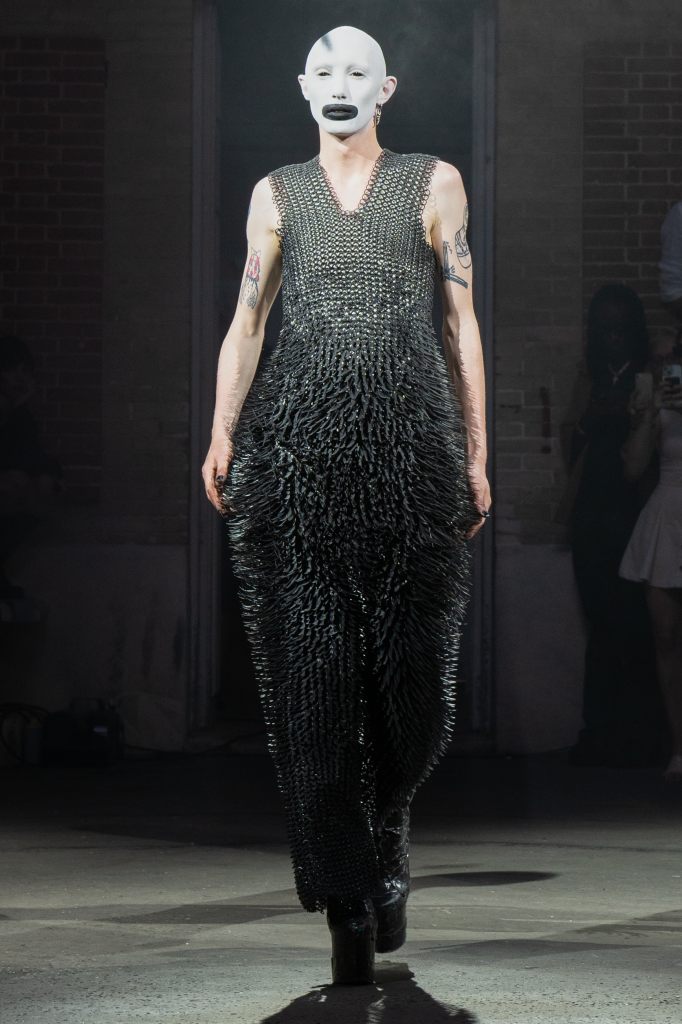
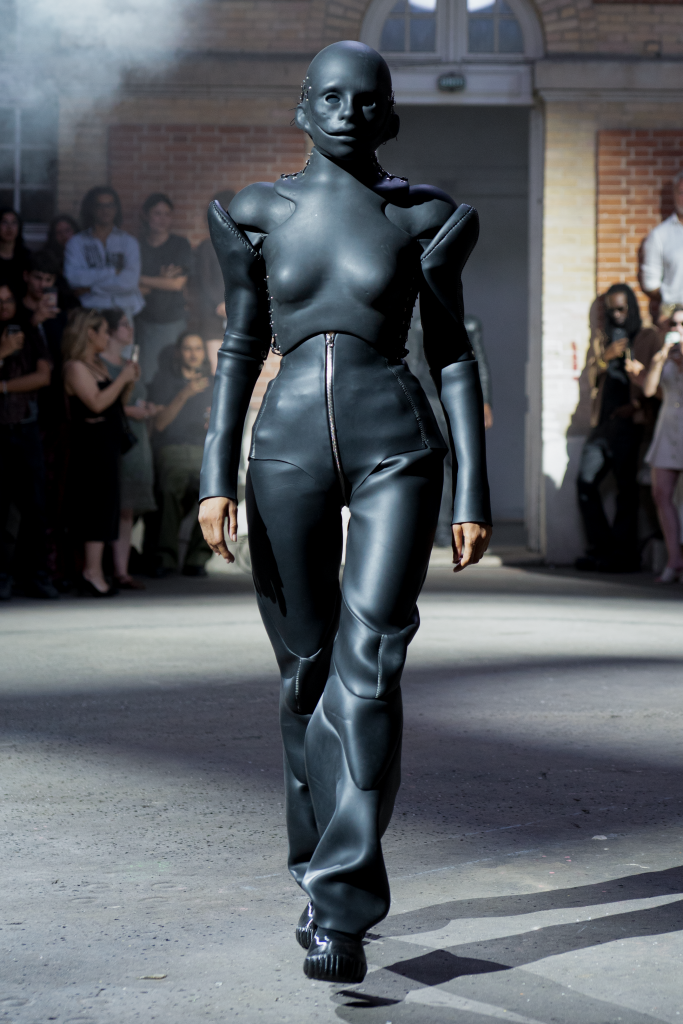
L’ABBEYE: Who are you and what do you do?
Victor: I’m a French designer based in Paris and raised in Bourne. I’m doing a lot of 3D printing and trying to reinvent some fashion processes by bringing CGI inputs and merging 3D and new technologies into craftsmanship.
L’ABBEYE: Your interest in merging 3D technology and physical making comes from your background in video games, character design, and CGI art. We wanted to know how this interest started, and when it started to crossover into fashion design?
Victor: I’ve been drawing all my life. In first grade, I role-played with a friend, and we kept drawing a world with all the characters, spaceships, vehicles, animals, and cities, making maps, etc. It was really world-building and very rich. After that, I wanted to keep drawing. Then I started with 2D animation, and when I was maybe 14, I did an internship in a 3D animation studio. In high school, I was in a special program where I was doing art and design. I wanted to do more character design for video games at that time, because before that I wanted to design jackets for video games like Sukodo. For university, I tried so many things and ended up in fashion. So I kind of fell into fashion in a weird way. When I arrived at fashion school and met my class, I met people who were so into fashion, fashion nerds who spoke about fashion in an amazing way. As it was an art school with a fashion program, it had a unique way of doing things.
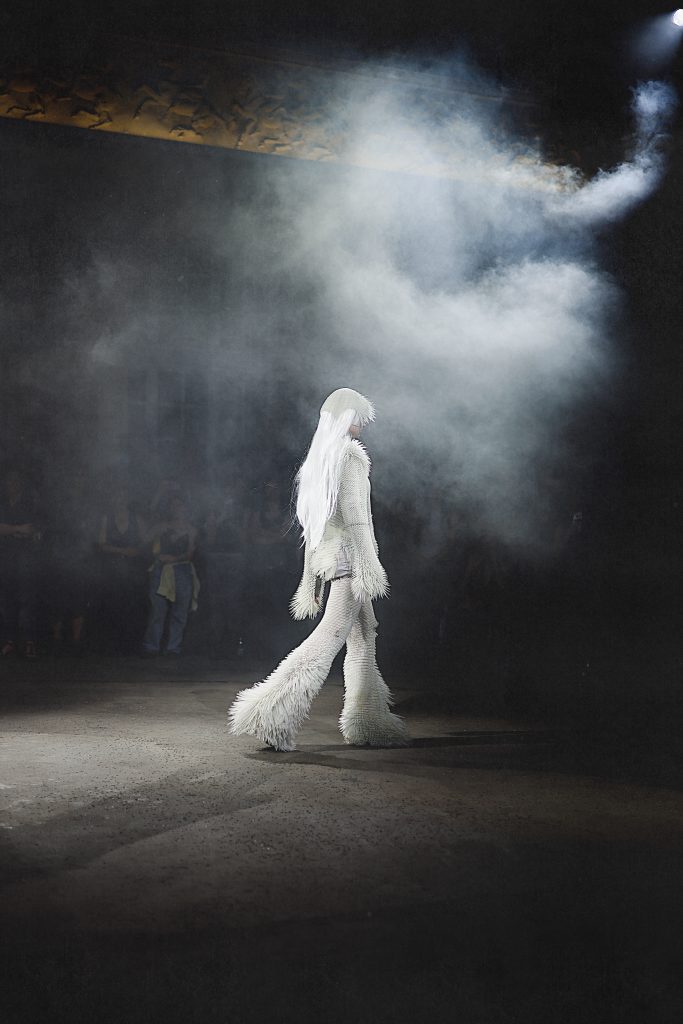
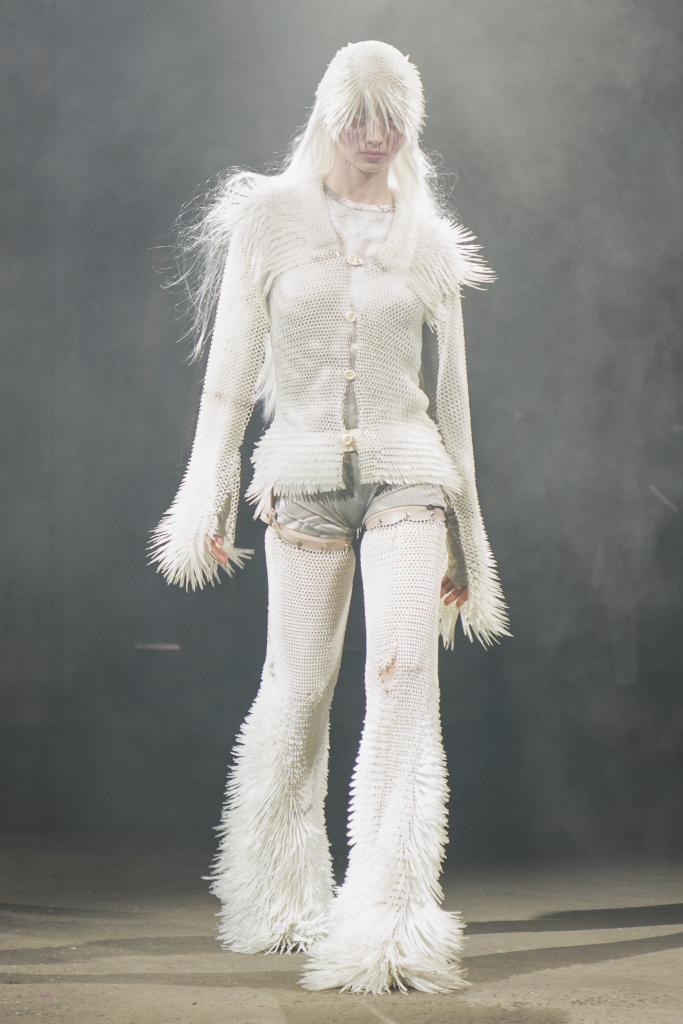
L’ABBEYE: In university, were you already bringing character design and 3D technologies into your physical fashion? Was it a similar aesthetic to what you’re doing now, or did that evolve over time?
Victor: In my portfolio, there were already some 3D images, 2D drawings, and sculpting. The teachers were like, “That’s cool, keep going.” At the time, there was absolutely no 3D or CGI on social media. I kept doing 3D and started finding ways to prototype some shapes on SketchUp. I developed techniques to make patterns from volumes in 3D, now we have so much software that can do that. The patterns were complex but perfect in a way, they matched exactly, mathematically.
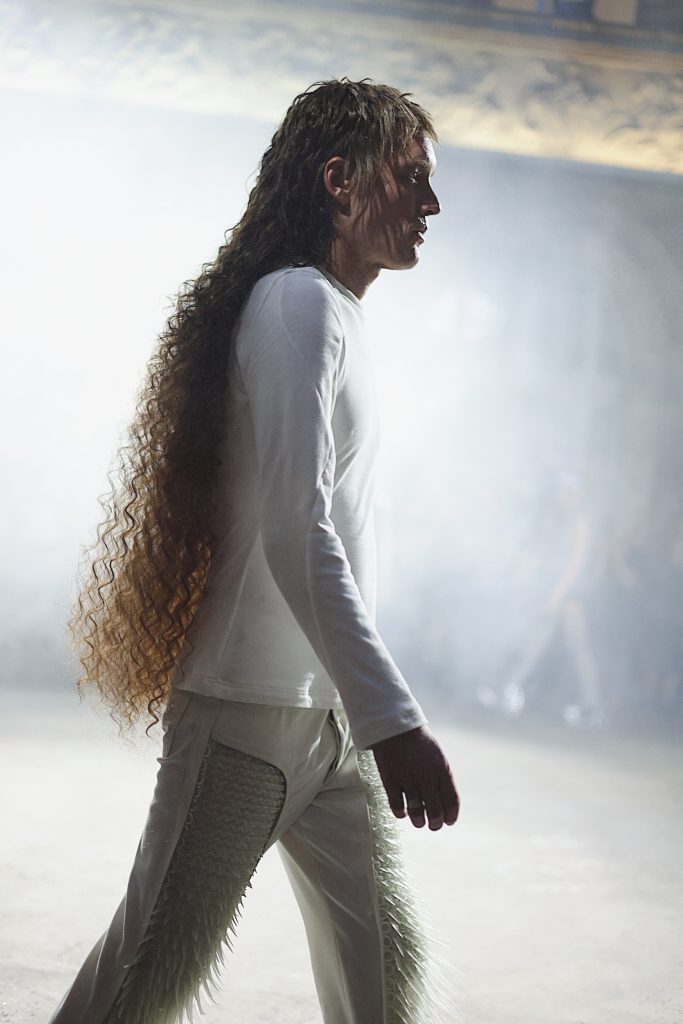
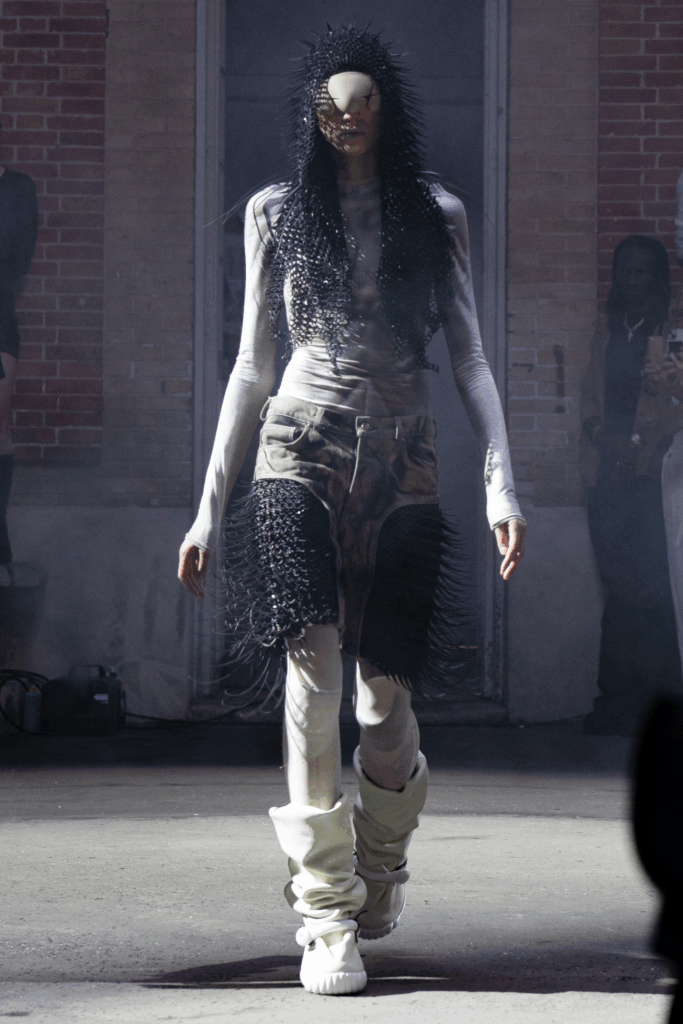
L’ABBEYE: Morphing and extending the human body is central to your practice. Was this born from using 3D and creating interesting patterns, or was it intentional even before that?
Victor: I think using 3D really pushed me to develop this aesthetic. At the time, I really wanted to explore volume and decompression. With 3D, you can really do volumes, deform the shape, and make some crazy forms. I thought it was so interesting to explore this in fashion, to make the most complex pattern with the most complex shape. I don’t know about the rest of the world, but in my school, people were mind-blown.

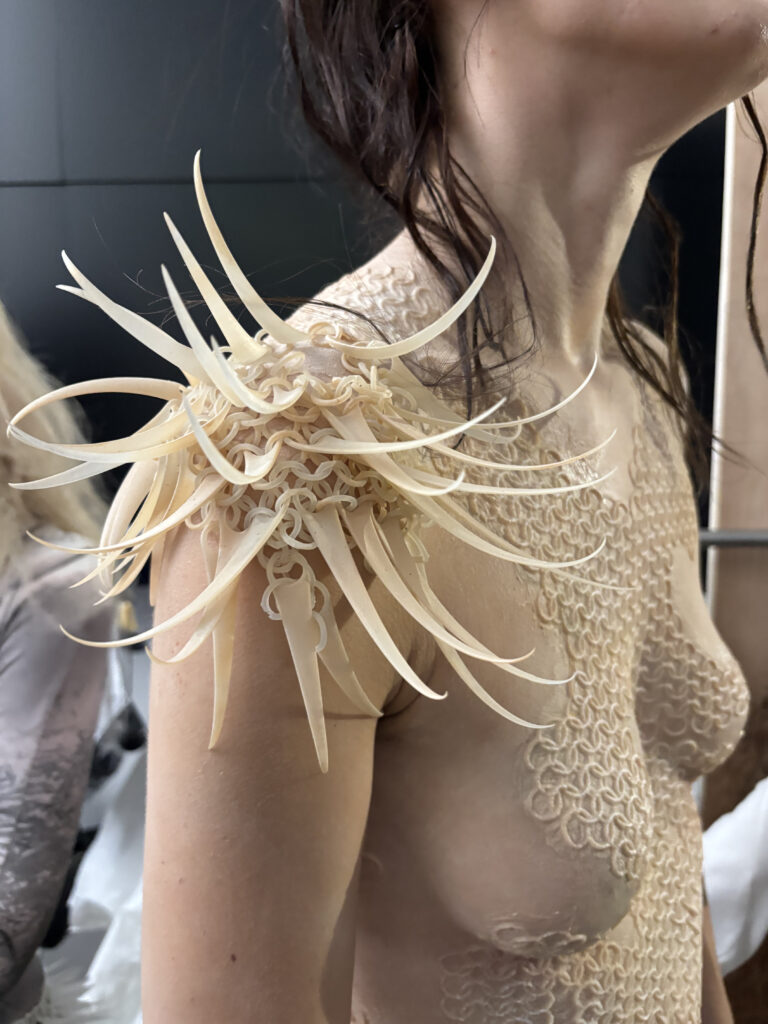

L’ABBEYE: You conceptualise an entire universe in your mind and visualise it using 3D software to inform your designs and collections. Do you already have the whole storyline for this world in your mind, or is it something that’s constantly evolving season by season?
Victor: It’s constantly evolving. I have the overall lore, the overall story. I have a map, I have some main characters, and I know their storylines and what their goals are. For me, this is really important because in the future I can explore other dimensions if I get bored of fashion. I also know that I have a solid base for starting a video game. As I build more and more material, maybe in a few years I can develop a manga, or a book, or just an art book. The new collection is set in a place where there is snow everywhere, and it takes place in a house very far away on an island, on a cliff.
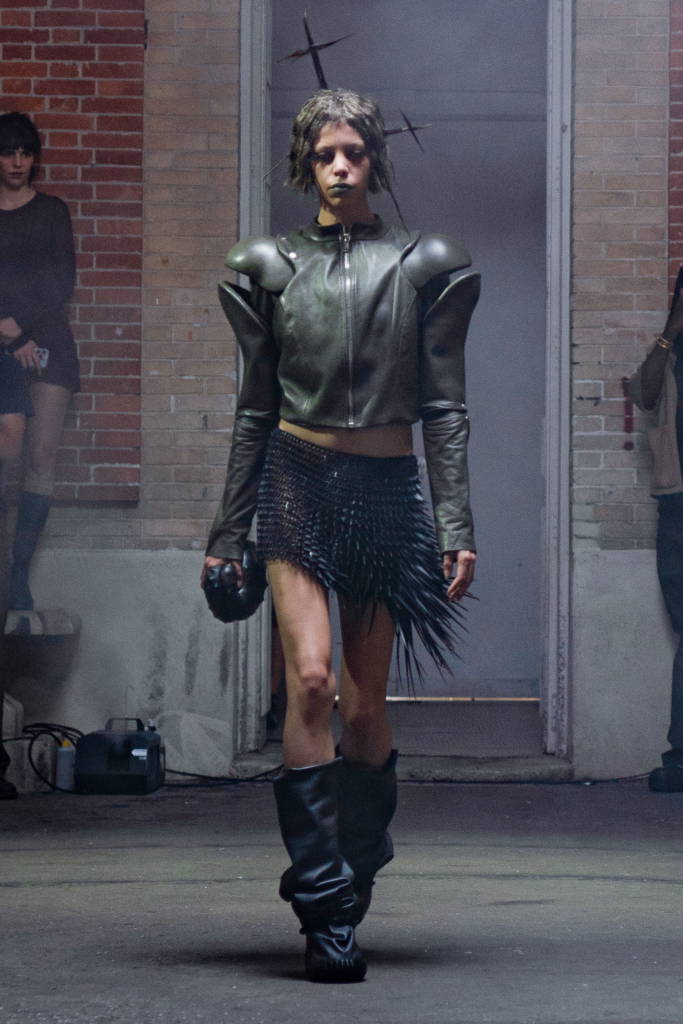

L’ABBEYE: So cool. When’s the new collection coming out
Victor: Early July. During my first fashion show.
L’ABBEYE: We also have to ask about your Rick Owens FW25 collaboration. Firstly, how did this collaboration come about? And walk us through the feather chainmail pieces you created, why you did those, and what the process was.
Victor: I graduated during COVID, so in my first year out of fashion school no one found any jobs in fashion houses. I started working at some CGI studios, and Rick sent me a message on Instagram, a video of him. I was mind-blown. I was like, is that a prank? I met him at his place the next day. I was having coffee, sitting with Rick on one side and Michèle on the other. I was like, what the fuck is happening? I wanted to work for him for years. I did my thesis on his work. I’d tried so many ways to just get an internship. I applied and it never worked out. At the time, I’d dropped fashion and was just working in studios. He wanted to collaborate on some stuff. So I developed a few pieces for the collection. Producing for him really got me back into fashion.

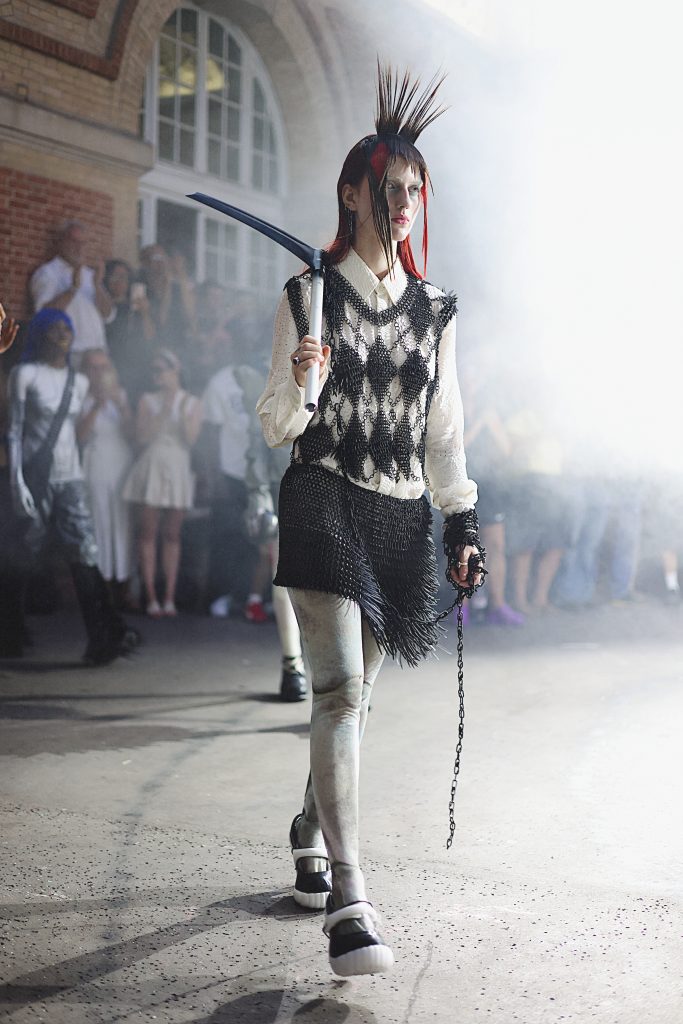
L’ABBEYE: What was the main thing you learned from this experience?
Victor: Knowing how to find the right people to work with. It’s crazy when there’s a real match with someone. You have to really take care of that relationship because you can achieve so much more with the right people. And obviously, I learned so much about the industry because I hadn’t had any experience in fashion before.
L’ABBEYE: Tell us about the chainmail pieces you made for the collaboration. Is this something you’ve developed yourself, and will it become a signature of your brand?
Victor: I developed this 3D print process for my own collection that I’m showcasing this July, and I’ve been working on it for a year now. But Rick saw it and wanted to develop something together, and that really accelerated the process. Now I can apply this process to ready-to-wear garments.
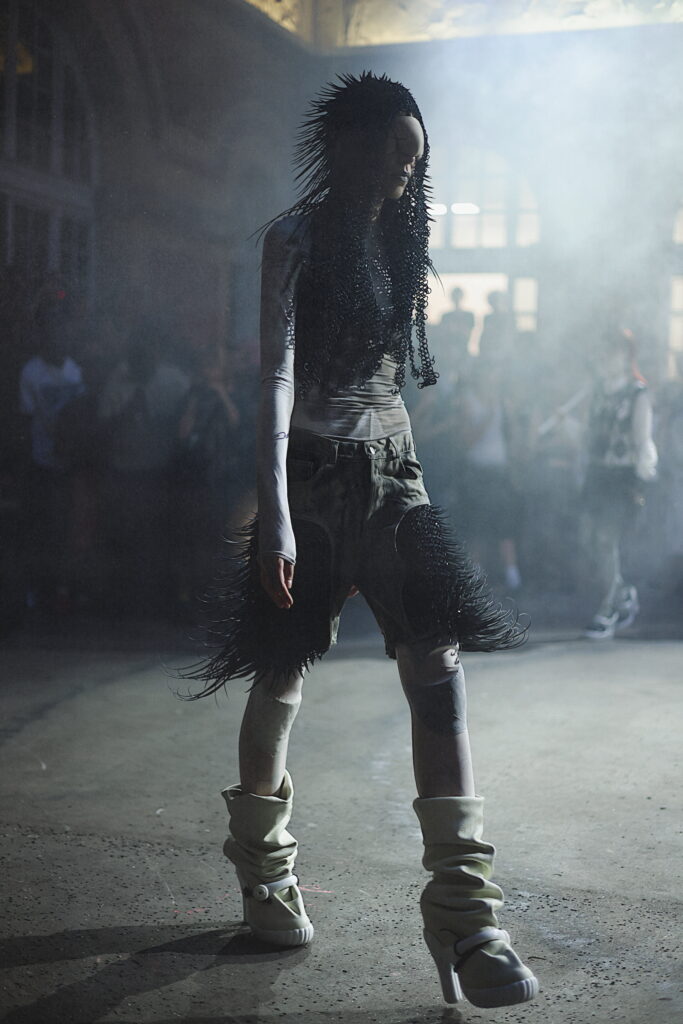
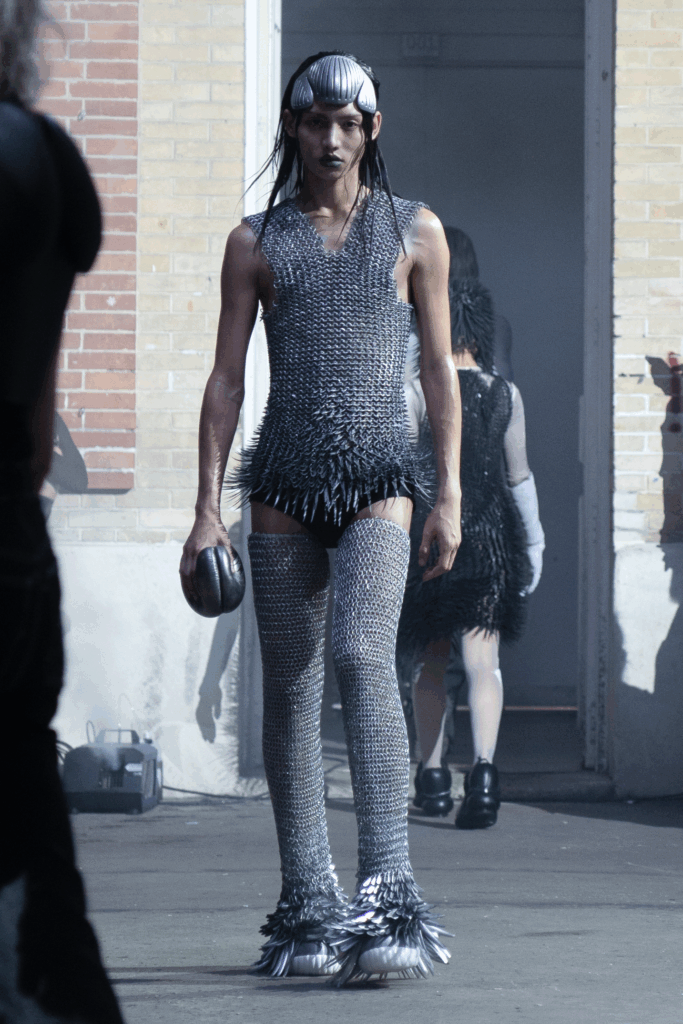
L’ABBEYE: Are there any other technologies or processes that you haven’t explored yet but are intrigued by?
Victor: For sure. I just met some people working with factories who can help me prototype, for example, printed metal chainmail prototypes for accessories. It opens up so many possibilities. I want to try metal 3D prints, SLS, laser techniques, etc. But I don’t even know yet what they’re fully capable of.

L’ABBEYE: Now for some closing questions. Like many artists, there’s often the fear that as you grow, you lose the time or ability to maintain your creative practice. How do you plan to protect that as your brand evolves? Do you have any fears about that?
Victor: I’m starting to understand the industry, and I know it could kill me, like literally. If I want to survive in this industry, I need to make creative, conscious time and focus more on development and R&D. But now that I’ve taken my first steps into the industry, I feel like I have a real chance. It doesn’t feel like I need to follow all the traditional steps a young brand is supposed to follow, like Fashion Week, collection development, buyer meetings, etc. I already have amazing clients and a wonderful community that’s been there for me for years.
L’ABBEYE: What’s next for you?
Victor: I don’t know what to expect from my first show. But the collection is almost done, and I have new ideas for pieces, new characters, and new stories. So it’s very exciting.
